When the COVID-19 lockdown kicked in, walks across the local golf course became a daily activity. Revisiting the same spots every evening meant I became very familiar with the sound of the place – the same characters appeared each time. However, there was one noise that carried more than any other over the wide open spaces between the wooded areas – the distinctive rapid drumming of the great spotted woodpecker.
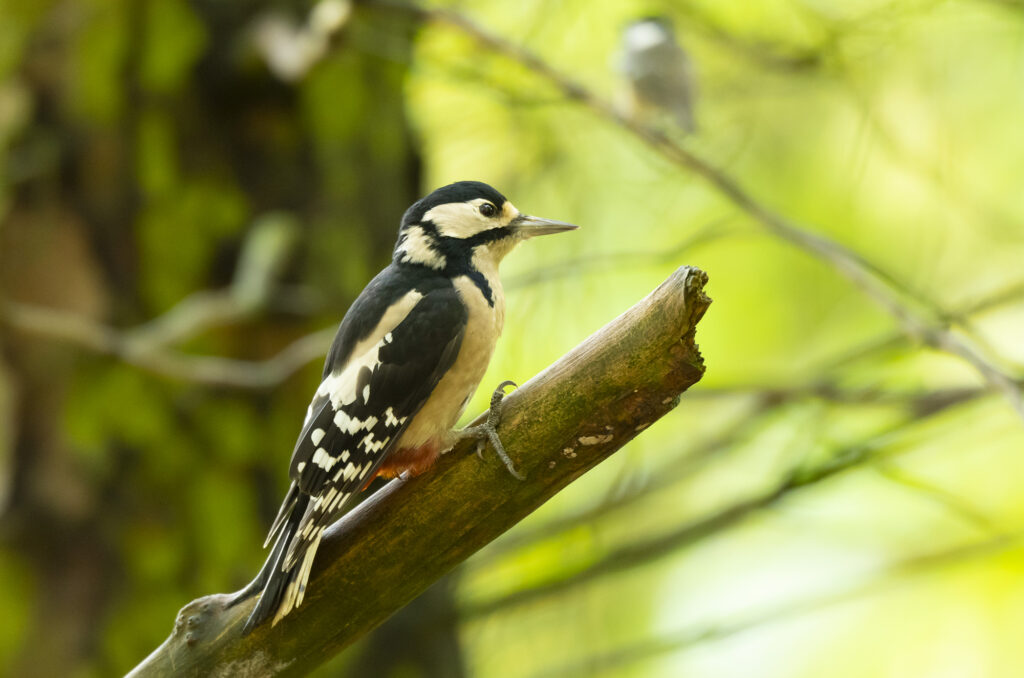
Colourful camouflage
It’s not just the drumming that makes this bird stand out. The great spotted woodpecker’s striking plumage is a feature shared by males, females, and juveniles. They have slight variations, but all share the key features that make them easy to identify.
The adult woodpeckers have glossy black upperparts with striking white shoulder patches and a bright red patch under the tail (known as the vent). Males are distinguished by a small red patch on the back of their heads, while females lack this feature. Juveniles, on the other hand, have a completely red cap on their heads, which makes them look quite different until they mature.
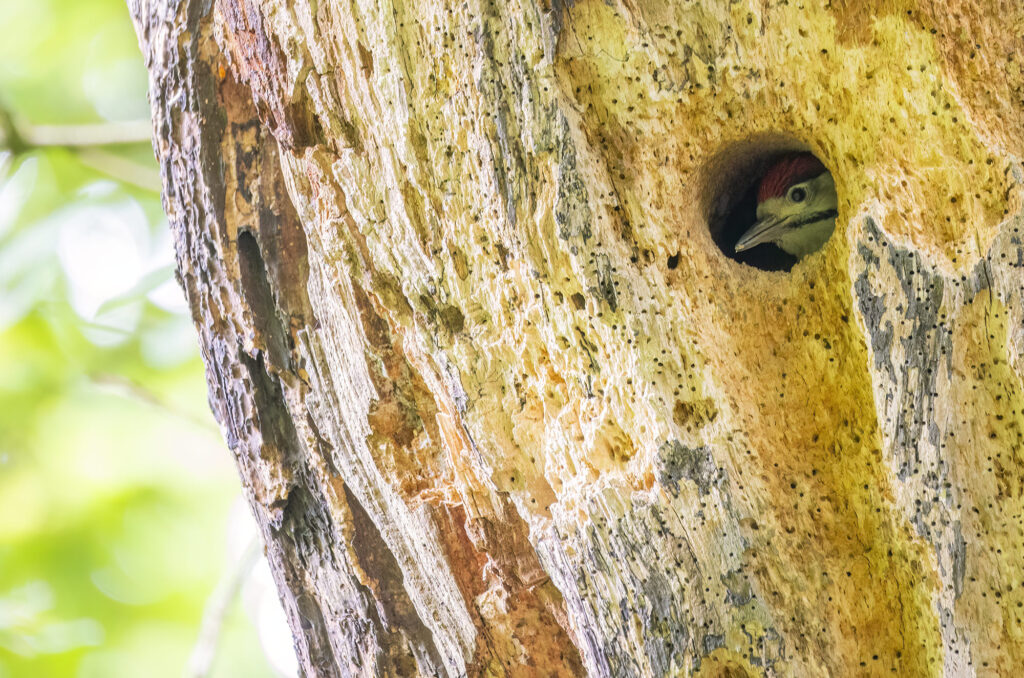
But why the bold and bright pattern when they spend so much time on tree trunks? Doesn’t that make them too easy to spot? Well, no, apparently not. On one walk over the golf course, me and my partner sat down briefly on a bench to soak up the late evening spring sun. Suddenly, there was a thunderous hammering from a tree only metres away. We tried to locate the drummer, but no matter how hard we looked, we couldn’t see it. It was a bit of a thrill to sit and listen as the great spotted woodpecker we knew was so close to us hammered away to establish its territory. Then we saw the flash of white as the bird flew away with its bouncing flight action.
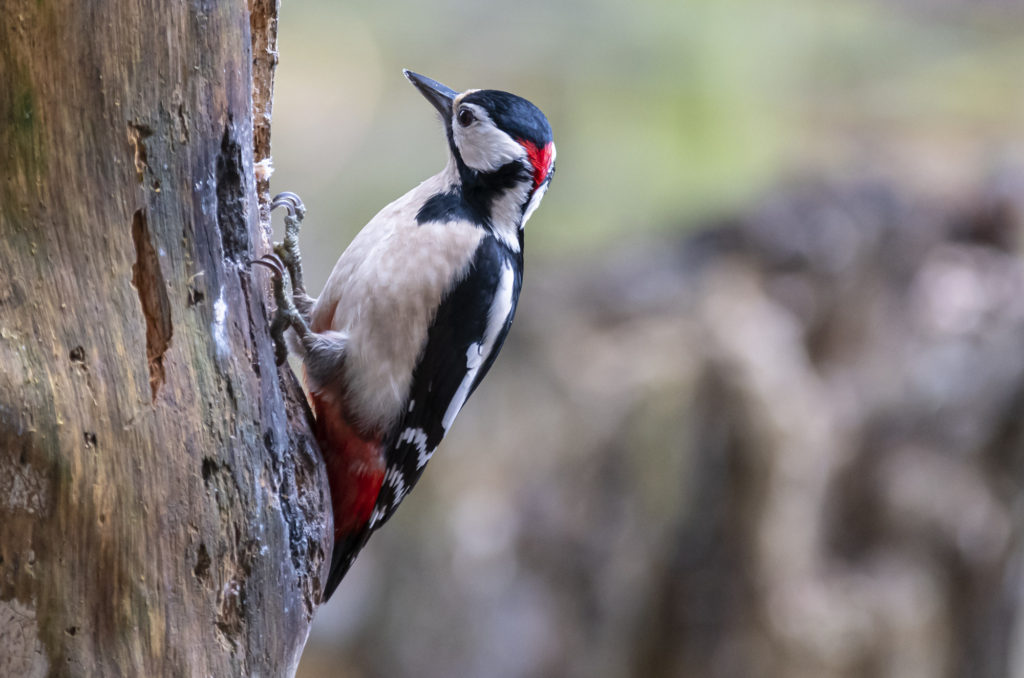
The reason we struggle to see great spotted woodpeckers is their disruptive camouflage. Rather than having plumage that blends in with their surroundings, the colour scheme of the great spotted woodpecker plumage breaks up their outline and also reflects the dappled light effect that occurs in woodlands.
Noisy nests
These birds are cavity nesters, with both males and females working together to excavate a hole in a tree where the female will lay 4-6 eggs. This usually happens in late April to May. Incubation lasts about two weeks, and both parents take turns sitting on the eggs and feeding the chicks once they emerge.
It was the noise that caused me and my partner to stop and take a look at a dead tree when on a walk through Gartcosh Nature Reserve. A constant loud bird call came from the tree next to the path through the reserve. To begin with, we thought it might be one or more birds in distress and calling in alarm. It was only when a little red head popped out of the hole in the tree that we realised it was a nest full of great spotted woodpecker chicks that was making the racket. These little darlings don’t wait for the parents to arrive with food before they become animated – they shout their heads off constantly. They also kept jumping up and sticking their heads out for a look, so I’m guessing they were close to fledging.
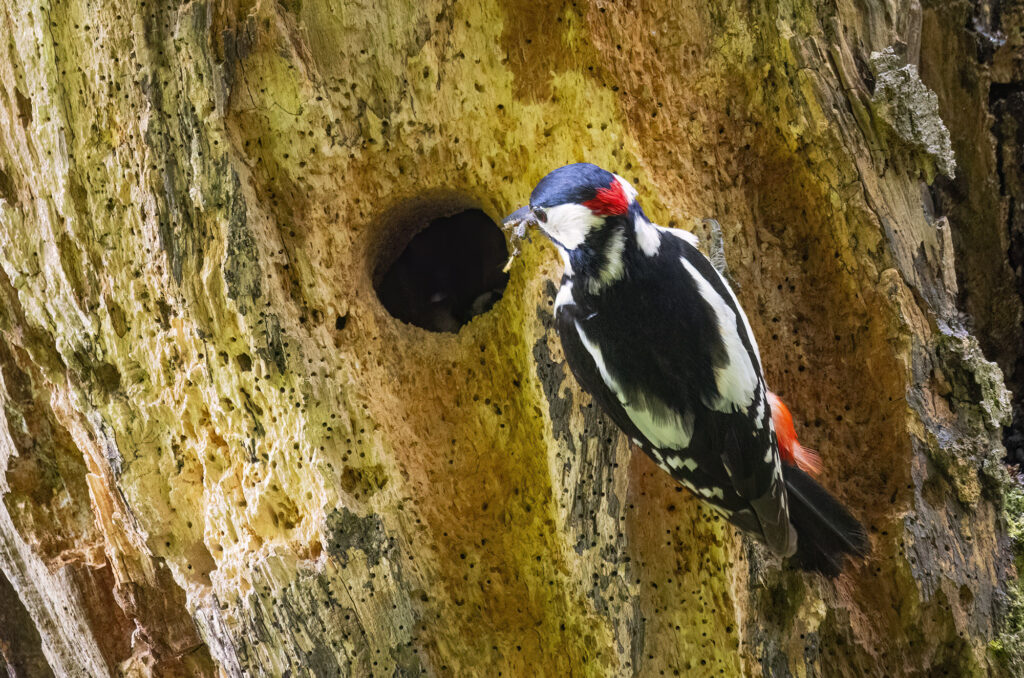
We watched from a respectable distance, and I could film and photograph the chicks and the male bringing food without disturbing the birds. We left quietly, with the noise from the chicks still ringing in our ears. It was a sound we wouldn’t forget in a hurry. We heard the same uproar coming from trees on a walk at Hogganfield Loch a week later. Without needing to try to get a closer look, we knew there were great spotted woodpecker chicks nearby.
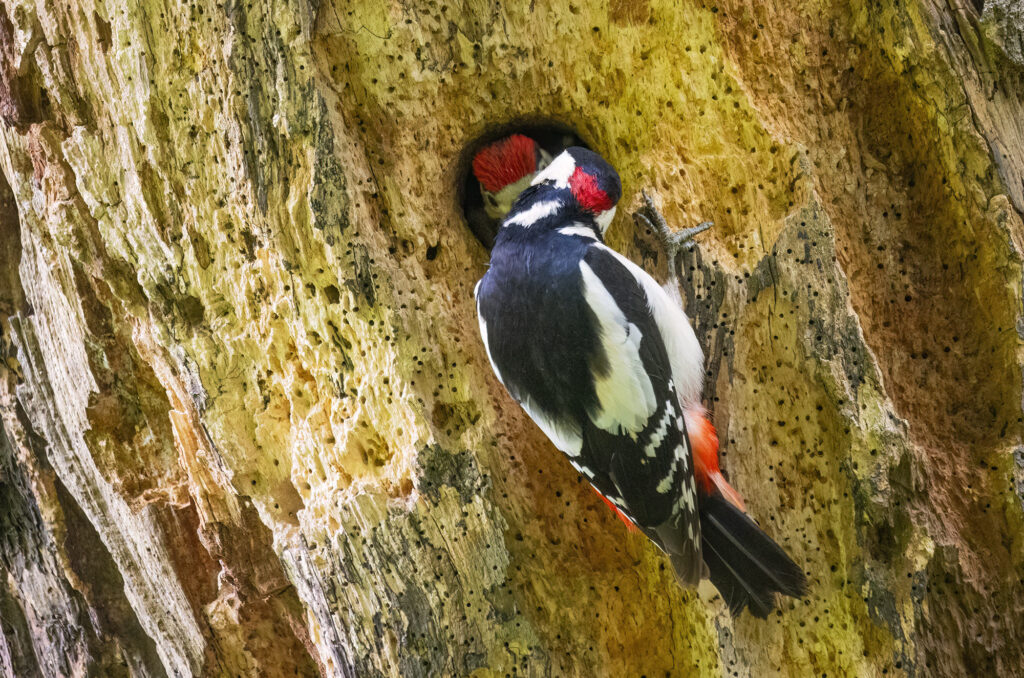
Nature’s headbangers
So, we’ve established that the chicks are noisy, but what about the drumming from the adults? Unlike other birds that use songs to mark their territory or attract mates, woodpeckers drum by rapidly tapping their beaks against tree trunks, branches, or even man-made objects like telegraph poles. Like the best musicians, they are looking for an instrument that resonates, and they chose their wood to ensure a good quality sound that carries well through woodland habitats. Both the male and female great spotted woodpeckers drum. The drumming is fast – up to 40 taps per second – and each burst lasts just a few seconds, followed by a pause.
It is thought that the great spotted woodpecker’s small size allows it to avoid headaches when banging its head against trees. Recent research has shown there is little cushioning in their skulls. Their upper and lower mandibles being different lengths may also help lessen the impact going to the brain.
Picky eaters
They also have unique tongues that help them to get at their favourite food. A woodpecker’s tongue coils around the back of its skull, which means it can be extended to reach the insect larvae in the tree trunks. Great spotted woodpeckers can poke their tongues out to about 4cm beyond the end of their bills.
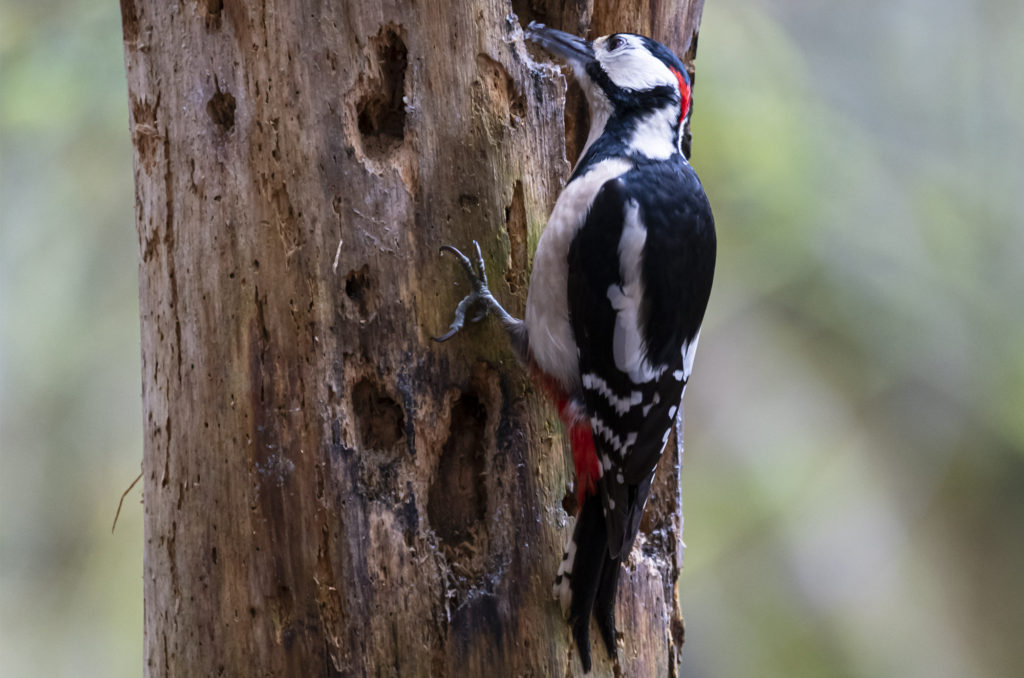
The diet of the great spotted woodpecker changes between the seasons. They feast on the larvae and insects that they pick out of tree trunks during the warmer months, but in winter, when insects aren’t as readily available, they will eat berries and nuts – including the peanuts we put out in our garden feeders. I have also seen one enjoying some suet from a coconut feeder.
Woodland wonders
Great spotted woodpeckers are woodland specialists, favouring mature deciduous or mixed woodlands, though they can also be found in parks, gardens, and orchards. In the UK, they are fairly widespread. When searching for these birds, focus on areas with plenty of large, old trees. Dead or dying trees are also popular with woodpeckers due to their resonance for drumming, and their soft bark for feeding and creating nesting holes.
Remember that these birds can be shy, so sitting and waiting for them to appear may be the best approach. If you don’t have a reliable location nearby and aren’t lucky enough to have a garden that these birds visit, another way to photograph great spotted woodpeckers is by visiting a woodland hide, as I did at Argaty Red Kites. Wherever you photograph them, if you’re in the shaded woods remember to crank up your ISO – these are fast movers!
With their vibrant plumage, fascinating behaviour, and unmistakable drumming, the great spotted woodpecker offers the best kind of disruption to a wander through the woods.

